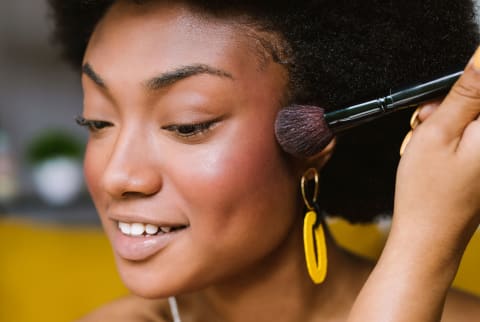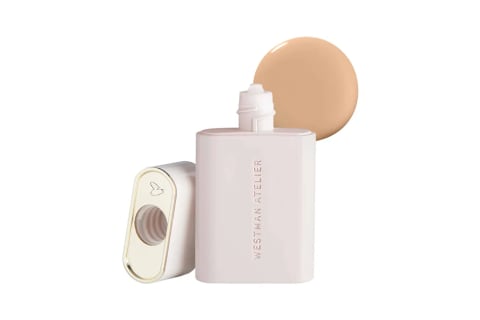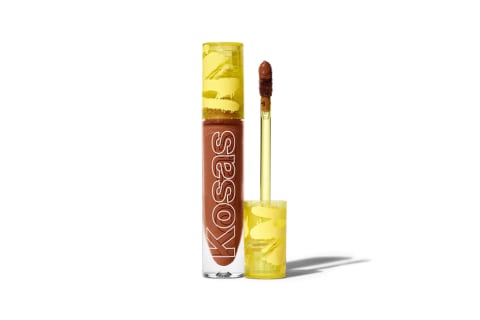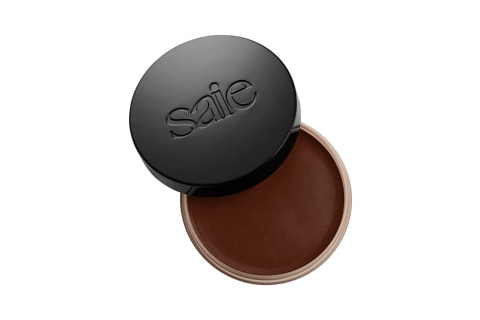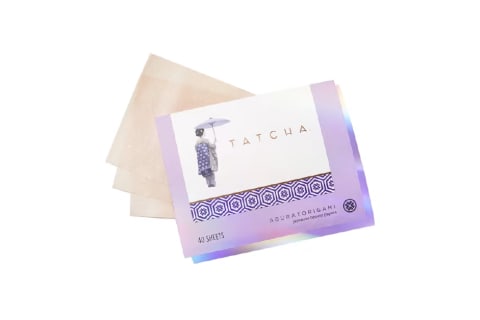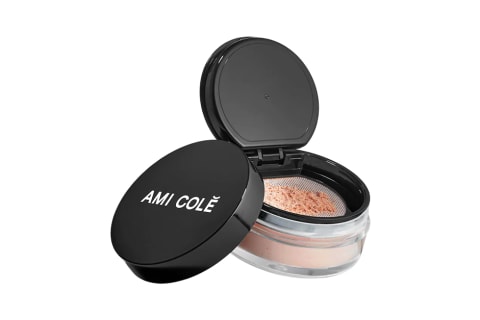However, a common complaint that many people have when it comes to makeup is that their complexion ends up looking “cakey.” If you’ve ever felt this way, or you just want to prevent a cakey base in general, then keep reading. We asked experts exactly how to skip a cakey finish and why it happens in the first place, so let’s get into it. This kind of look happens most often when there are layers upon layers of product on the skin—think primer, foundation, concealer, bronzer, powder, and the like. While you may want to use all of these products for one full-glam look, layering them directly upon each other can lead to a cakey finish if you’re not strategic. When this happens, your makeup look may begin to slip and slide, and it likely won’t photograph as smooth or luminous. To follow, what habits and techniques are making your makeup look cakey and how to fix it. This is why it’s so essential to tend to your skin before any makeup touches it. Even if you did your basic skin care routine earlier in the day, it’s a better idea to cleanse the skin and start over than layer on more products. You can opt for a gentle facial cleanser as well if that’s more your speed. If you want to go above and beyond, consider using ice globes, dunking your face in a bowl of ice water, or doing a cool compress with a chilly towel beforehand. This will help depuff the skin and make your face look even more sculpted. Want to dive deeper into skin prep? This beauty breakdown has everything you need to know. Too much product can mean too much foundation, concealer, or powder. While you may think a full-glam look requires a hefty layer of makeup, that’s not always the case. See, foundation is designed to be a buildable medium, meaning you can add more in places you need it without having to go all-in on the first go-around. Start by placing a light dot on each section of your face toward the center (the cheeks, chin, and forehead), or lightly dab your brush in the foundation puddle. Then, blend onto your face and down your neck. If you see redness peeking through or you want more coverage on a blemish, then you can go in and add more after the product has been set for a minute or so. Remember that concealer also works wonders for spot coverage, so you don’t have to have a perfect canvas with just foundation. Read: If you want a dewy, luminous look, then stick to products marketed as such. If you need to limit oil and shine on the skin, then look for mattifying products rather than glow-inducing ones. The goal here is to use as little product as possible, so keeping your end goal in mind from the second you start prepping your skin is essential. If you find yourself unable to use up the product by its expiration date, consider buying a smaller size to prevent wasting the product. “When I’m on set, I am a huge fan of removing the makeup completely during lunch and reapplying it to give it a fresh look,” she explains. This is important for those looking to take a makeup look from day to night, as it might not always make the full 12 hours (and that’s OK). This way, you’ll go into the night feeling more confident, and you’ll be able to be present in the moment rather than running through anxious thoughts about your makeup’s subpar finish in your head. Basically what you’re doing here is applying a single layer of makeup while still checking all of the product boxes. You can even try applying your bronzer and blush as a base, then going in with foundation after. Just try to experiment with your order of operations and see how many layers you actually need at the end of the day. You can keep these sheets on hand for touch-ups throughout the day, as well as a tool to manage extra shine. If you’re using a brush, swap to a makeup sponge or even clean fingers. You may just need to shake up your method to see the best results. Plus, if you applied too much makeup to your brush in the first place, then immediately swap tools to avoid layering on even more product. “Add a tiny bit of moisturizer and reapply the concealer,” she adds. This way, you’ll only have one layer of makeup on those problematic areas, which will lower the chances of it creasing. This way, your fresh tool will absorb the excess product while blending at the same time.


